
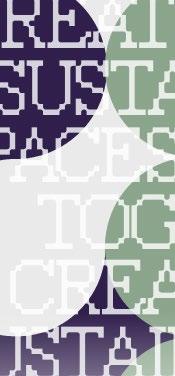




scan this link for the tour



The link/QR code below describes the route; use the pictures as a guide and read the texts to each other at the locations of the pictures
https://goo.gl/maps/TvxRhy37LRGCQJj56
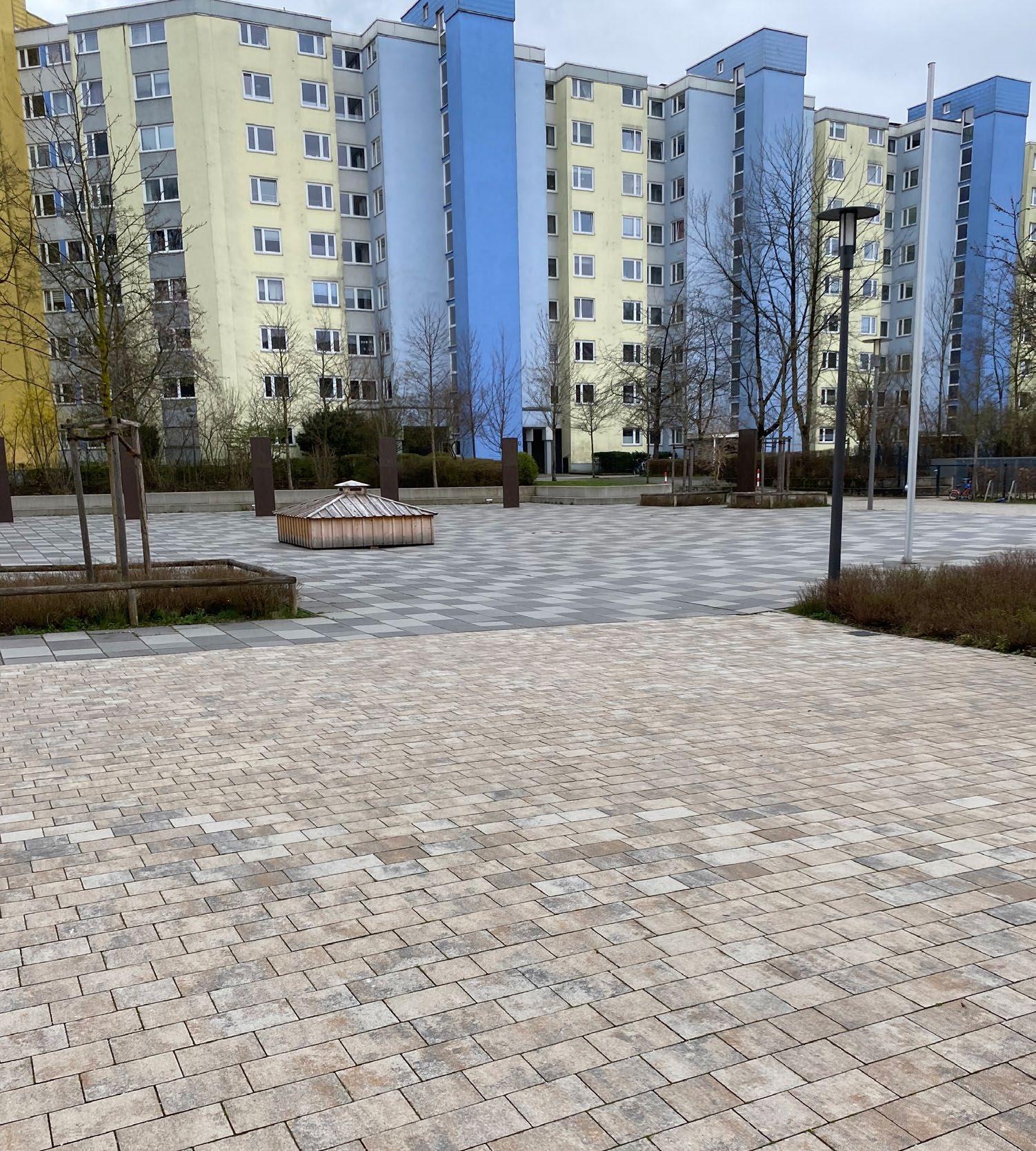
Neuperlach is a district built on a greenfield site in 1967 with around 65,000 inhabitants in the south-east of Munich and belongs to district 16 (Ramersdorf-Perlach) of the Bavarian capital. The district, which mainly consists of large housing estates on the former Perlacher agricultural space to the east of the old village of Perlach, is one of Germany’s largest satellite towns (a larger settlement in the immediate proximity of a large city that is economically and functionally dependent on the core city).


As a “town next to the town”, construction began in 1974, Neuperlach was to become a relatively independent, lively and attractive community through the integration of living, working, shopping, culture and sport, a high population density and an urban dimensioned and designed town center. Before the foundation stone was laid, this plan underwent radical changes; in the interests of more economical, additive construction, the idea of interlinking different urban functions was initially rejected in favor of a clear separation of residential, shopping, office, cultural and sports areas; later, the sports facilities were also removed, the cultural infrastructure was almost completely abandoned and reduced to a community center (whose dimensions have continued to shrink to this day and which has not yet been built).

Egon Hartmann, Neuperlach’s main planner, had warned in vain against the degradation of the district’s center to an “air-conditioned all-purpose department store” without any real urban life; the architect Bernt Lauter distanced himself from the project even during the reworking of his design, in which he was no longer involved.

Neuperlach is a district with a high ageing population. Although the neighborhood is notable for its accessibility in terms of footpaths and bridges, the situation within the apartment blocks is different: elevators that only stop between floors make it impossible for many older people to leave their apartments independently. This encourages loneliness in old age and is a major problem in Neuperlach’s social structure. One action of the NEBourhoods project , “Redesigning Housign structures”, tackles that problem by designing different variants for energy-efficient refurbishment that include a removal of these barriers.

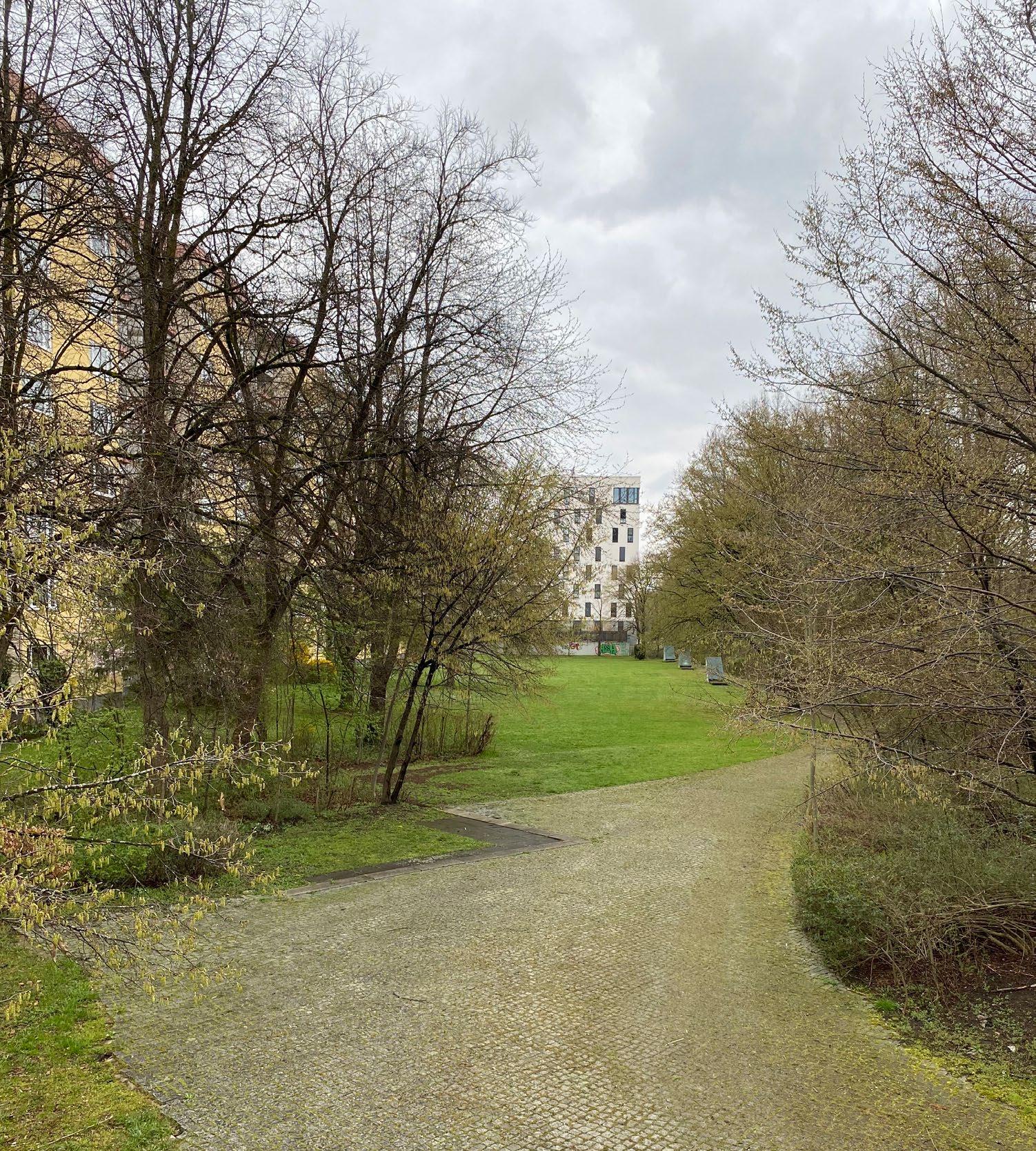
Due to the structure of high apartment blocks, Neuperlach is the district with the largest proportion of urban green spaces.
While some apartments are overcrowded and show cramped living conditions, this raises different questions: How can these large green spaces be used to improve the quality of life? Can we either outsource functions from inside the apartments or turn the green spaces into real oases for everyone? Who needs to be involved in this?
The NEBourhoods action “Neuperlach eats Green” has found 15 initiatives who are going to set up gardens and small food chains . This could be a starting point for other ideas.


The bridges and footpaths have already been mentioned in a positive light: if you want to avoid waiting at traffic lights in Neuperlach, you can move around the district almost entirely via traffic-calmed areas such as footpaths and bridges. Only the traffic noise of Ständlerstr. beneath this bridge is not yet “escaped”. But what could be difficult about the long bridges for vulnerable groups and how could the bridges possibly be used additionally?
Long bridges without shade can be a problem for elderly and vulnerable people. This is why NEBourhoods “Public Power” has developed proposals for shade elements that can be installed there.

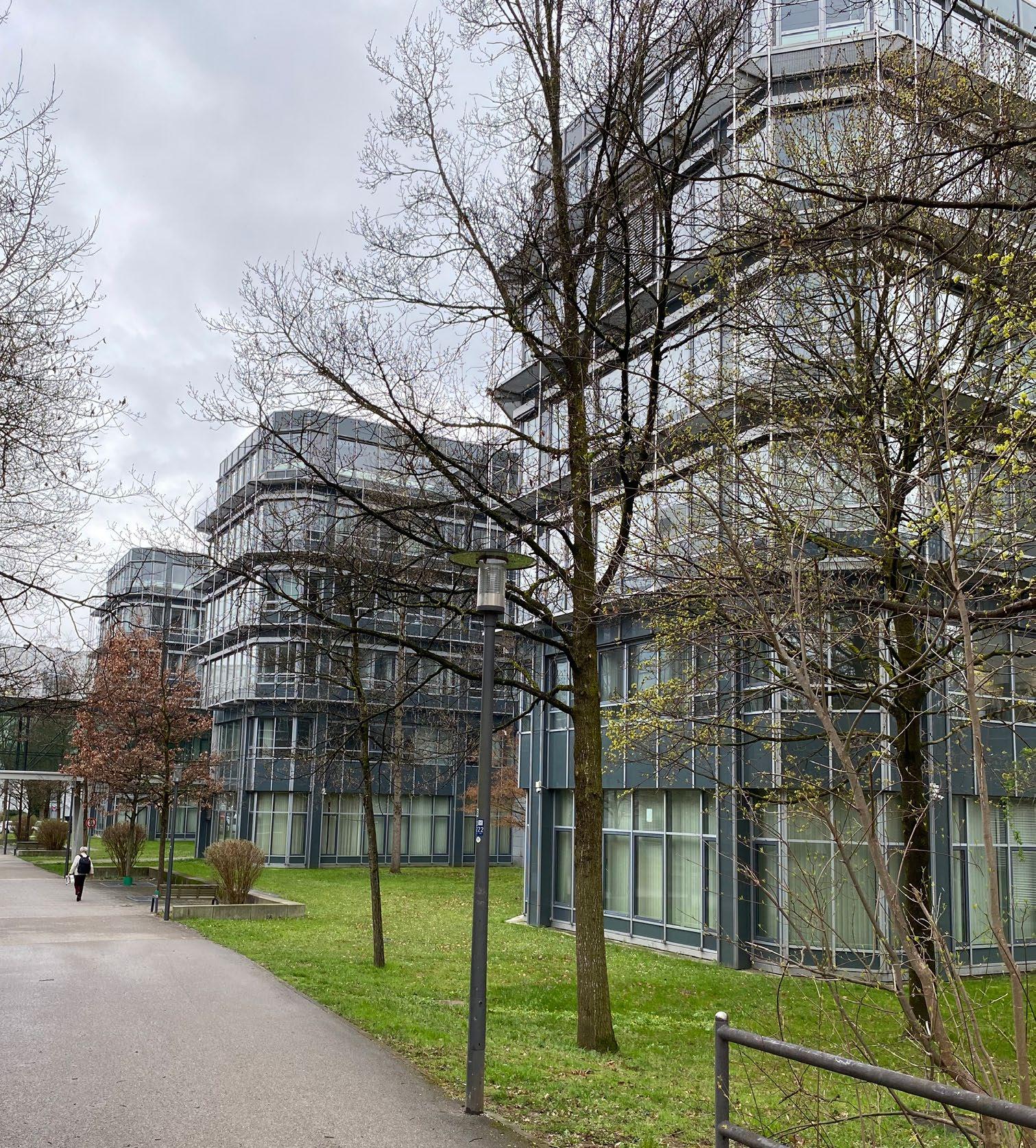
Many companies have taken advantage of the wide range of space available in the newly emerging “city within the city” and built large office complexes in Neuperlach.
Wacker Chemie, Siemens, Generali (building in the picture), Deutsche Rentenversicherung, AOK and formerly Allianz have their headquarters here. As the pandemic has caused many employees to increasingly work remotely or some companies such as Allianz to relocate, the question may arise as to how office space can also be used in a circular way.

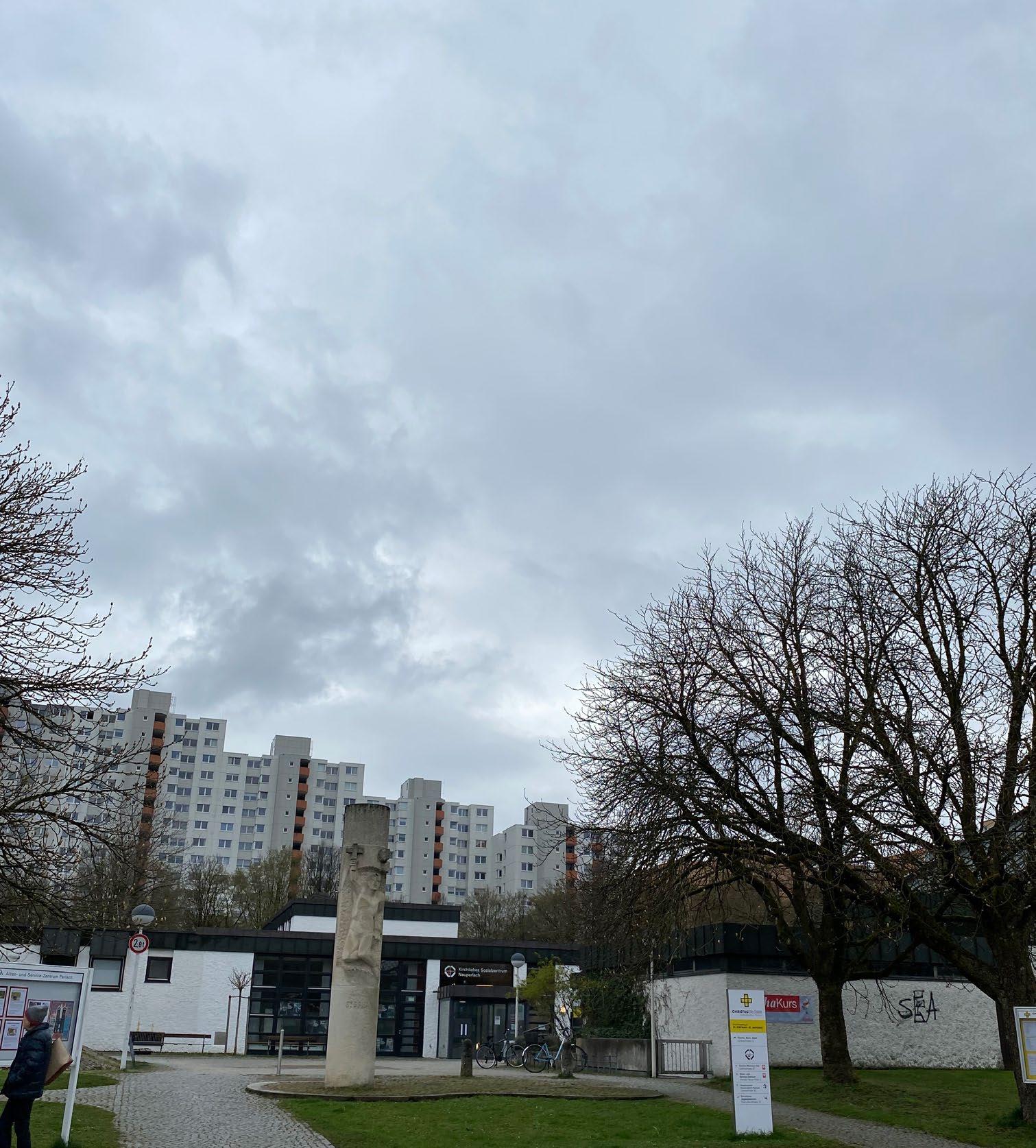
We are standing at the center of the “Wohnring”, “living ring”, an eight-sided ring that is 400 m in diameter and includes various institutions such as the ZAK (wooden buildings behind us), the service center for elderly people, the social center, the St. Stephan church (all in the complex in the picture), a kindergarten, a school, playgrounds and much more. ZAK, Zusammen aktiv in Neuperlach e.V., is an association that does a variety of activities for the neighborhood since 1980 and also realizes sustainable projects such as repair cafés or residents’ gardens.

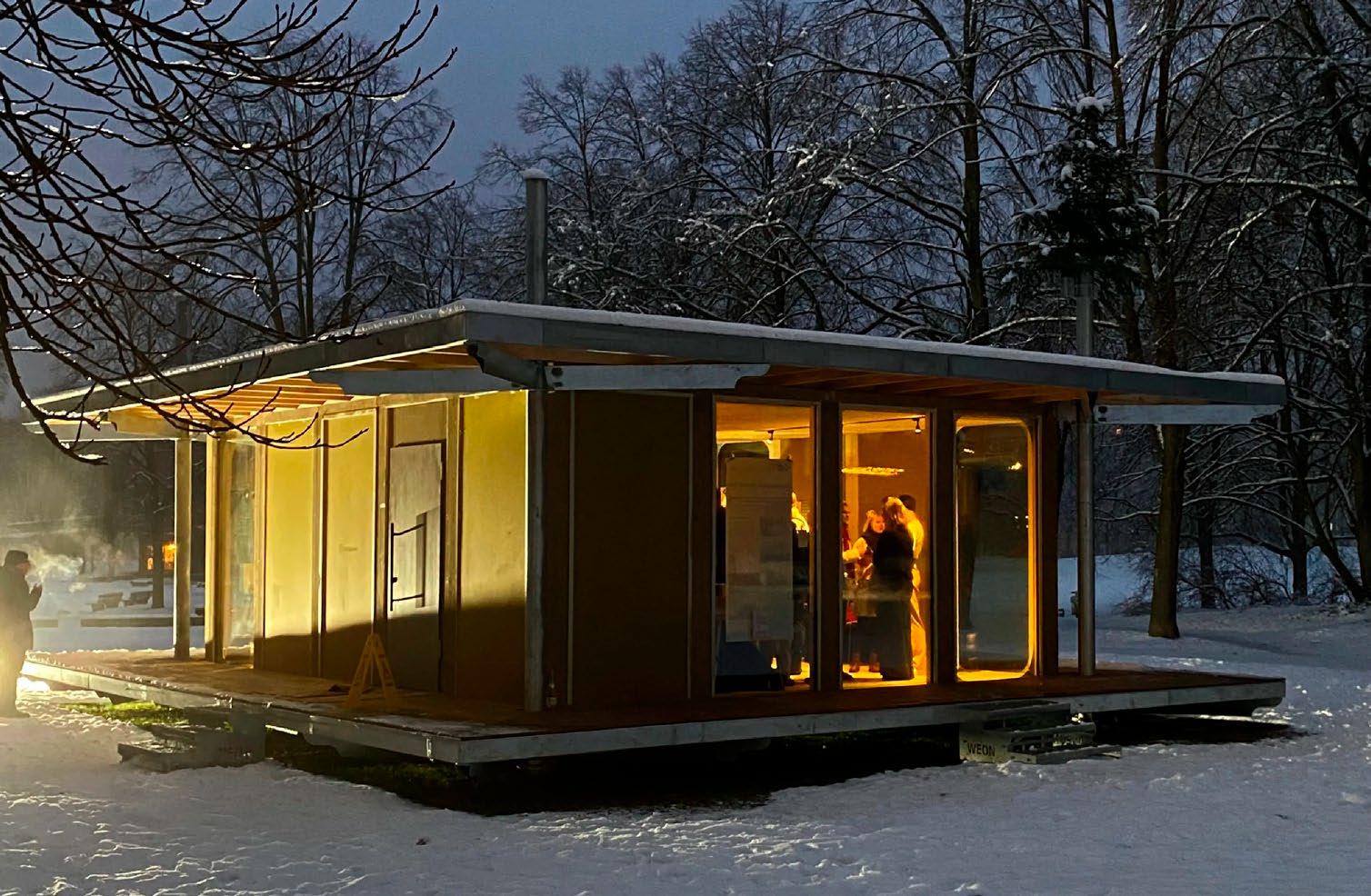
This is the NEBourhoods Pavilion, workshop and Eventspace for both project activities and the possibility of use for neighborhood projects and working groups. It is also a prototype for future building and living, invented by the start-up WEON, as it can be erected within a day, is made of sustainable materials and can even form 5-floor apartment blocks when several are combined.
When you turn around, the big shopping center, PEP, you are facing now is going to be home for our Animal Aided Design activities: A bat tower, rain chains, (which is a vertical greening form), and the combination of a “Neuperlach eats Green”-garden on the roof of the building with cohabitational practice.



We have just taken an important path, namely the path through the PEP, which is open day and night.
The PEP shopping center is an important meeting place for the people of Neuperlach, especially as it is so centrally located and next to the bus station (NPL has one of the best public transport networks). Nevertheless, there are also non-consumer meeting places such as the Pepper Theater, a location of the Kulturbunt association, which does important (inter)cultural work in NPL, e.g. with exhibitions in the Kulturhaus at the Quiddestr. subway station or in the converted truck, that can be used for theater,

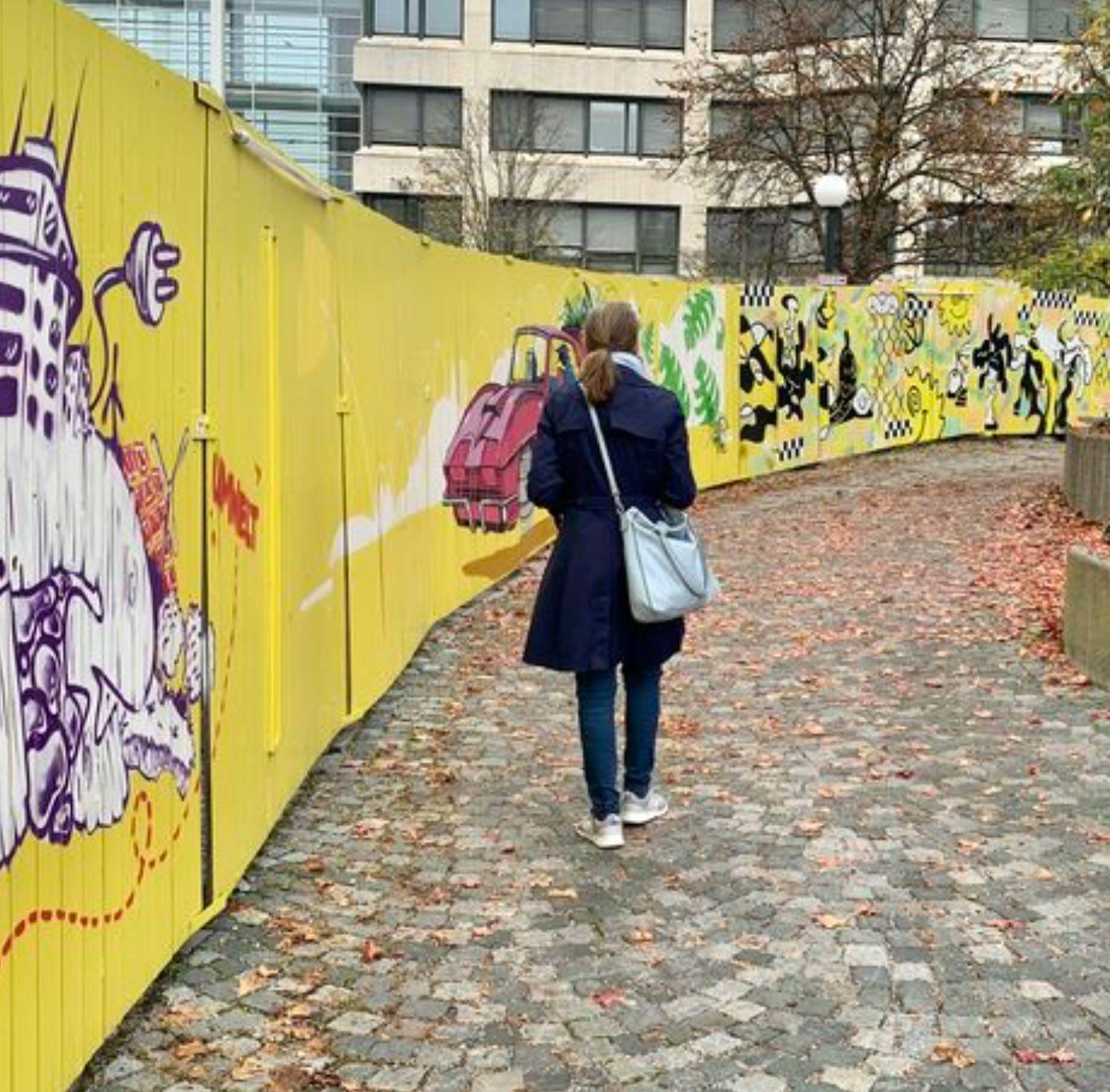
Our last point: shaere, one of the most progressive projects for the conversion (interim use) of vacant office buildings at the moment; the real estate developer HINES has developed new forms of occupancy here in a participatory process together with shaere; democratic, inclusive and intercultural projects find space here free of charge, but you can also rent office space; the Community Kitchen project provides food from rescued foodstuffs.
